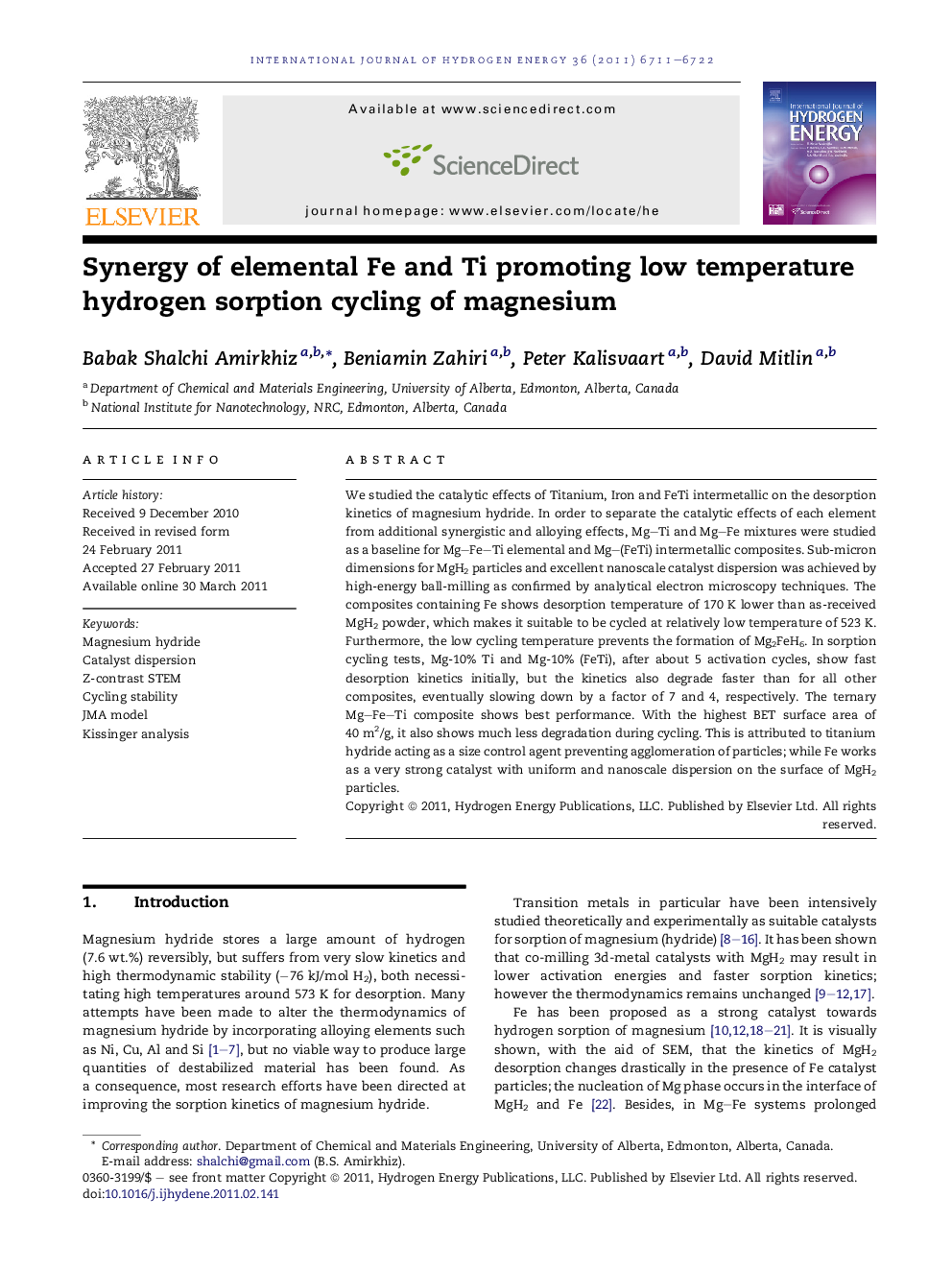| Article ID | Journal | Published Year | Pages | File Type |
|---|---|---|---|---|
| 1276029 | International Journal of Hydrogen Energy | 2011 | 12 Pages |
We studied the catalytic effects of Titanium, Iron and FeTi intermetallic on the desorption kinetics of magnesium hydride. In order to separate the catalytic effects of each element from additional synergistic and alloying effects, Mg–Ti and Mg–Fe mixtures were studied as a baseline for Mg–Fe–Ti elemental and Mg–(FeTi) intermetallic composites. Sub-micron dimensions for MgH2 particles and excellent nanoscale catalyst dispersion was achieved by high-energy ball-milling as confirmed by analytical electron microscopy techniques. The composites containing Fe shows desorption temperature of 170 K lower than as-received MgH2 powder, which makes it suitable to be cycled at relatively low temperature of 523 K. Furthermore, the low cycling temperature prevents the formation of Mg2FeH6. In sorption cycling tests, Mg-10% Ti and Mg-10% (FeTi), after about 5 activation cycles, show fast desorption kinetics initially, but the kinetics also degrade faster than for all other composites, eventually slowing down by a factor of 7 and 4, respectively. The ternary Mg–Fe–Ti composite shows best performance. With the highest BET surface area of 40 m2/g, it also shows much less degradation during cycling. This is attributed to titanium hydride acting as a size control agent preventing agglomeration of particles; while Fe works as a very strong catalyst with uniform and nanoscale dispersion on the surface of MgH2 particles.
